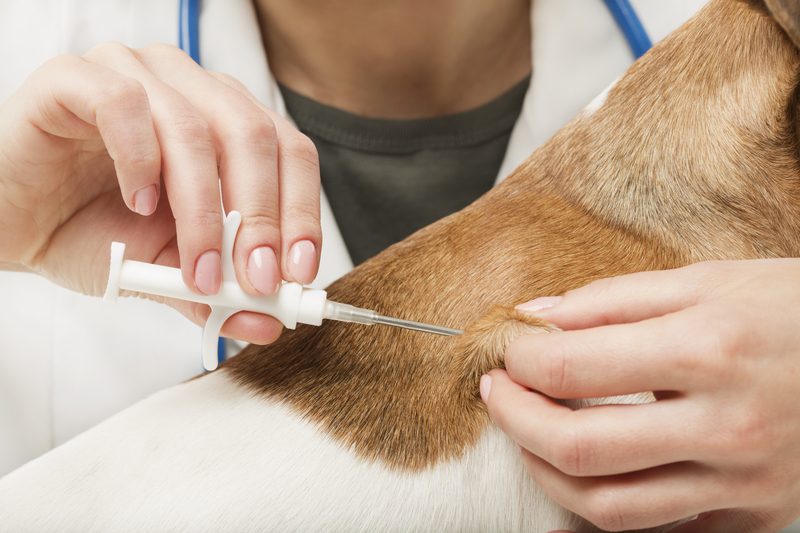How to Pack Artwork and Decorations Safely
Posted on 19/10/2024
Packing artwork and decorations safely is vital, whether you're relocating to a new home or need to store your cherished pieces temporarily. Mishandling these items can lead to heartbreaking damage or loss. Ensuring each piece is securely packed not only preserves their physical condition but also maintains their monetary and sentimental value. In this comprehensive guide, we'll delve into the best practices and essential steps for packing your artwork and decorations securely.
Gathering Supplies
Before you begin the packing process, it's crucial to gather all necessary supplies. Proper materials will provide the foundation for effective protection.
- Bubble wrap: This is essential for cushioning delicate items.
- Packing paper: It helps wrap items without scratching or smudging.
- Cardboard corners: These protect the corners of frames, which are particularly vulnerable to damage.
- Foam boards: These provide additional protection for larger pieces.
- Sturdy boxes: Choose boxes that are appropriately sized and durable.
- Masking tape or painter's tape: These tapes are less likely to leave adhesive residue on delicate surfaces.
- Marker: For labeling your packed items.
- Glassine paper: It's water and grease resistant, perfect for wrapping paintings and photos.

Preparing Your Workspace
Setting up a clear, organized workspace is one of the first steps to packing artwork and decorations safely. Ensure you have a flat, clean surface for wrapping and packing each item. This minimizes the risk of accidents and makes the whole process more efficient.
Packing Framed Artwork
Framed artwork requires specific steps to ensure safety during transit or storage. Here's a detailed process:
Step 1: Clean and Protect the Glass
Use a gentle glass cleaner to clean the glass surface of your framed artwork. Once cleaned, place an X of masking tape across the glass. This precaution helps prevent the glass from shattering completely if it's broken during the move.
Step 2: Wrap in Glassine Paper
Place your clean, taped framed artwork on a sheet of glassine paper. Cut the paper to fit, leaving a few extra inches around the edges. Carefully fold the paper over the edges and secure it with masking tape.
Step 3: Bubble Wrap
Lay out several sheets of bubble wrap, with the bubbles facing inward. Place the framed artwork on the bubble wrap and fold it over, securing with tape. Ensure the entire piece is well-cushioned.
Step 4: Cardboard Corners
Attach cardboard corners to the frame for added protection. These can be purchased or made by cutting and folding pieces of cardboard.
Step 5: Box and Label
Place the wrapped artwork into a sturdy box, filled with packing peanuts or additional bubble wrap for insulation. Once the artwork is snug within the box, close and seal it with strong packing tape. Be sure to label the box with a marker, indicating "Fragile" and any other relevant information such as orientation (e.g., "This Side Up").
Packing Sculptures and Figurines
Sculptures and figurines can be particularly tricky due to their irregular shapes and delicate features. Here's how to ensure they're packed safely:
Step 1: Wrap Delicate Parts Separately
Identify any fragile or protruding parts of the sculpture. Wrap these areas first with packing paper, securing them with masking tape. Follow up with a layer of bubble wrap.
Step 2: Full Sculpture Wrapping
After the delicate parts are protected, wrap the entire sculpture with bubble wrap, covering it thoroughly to ensure complete protection.
Step 3: Prepare the Box
Select a box slightly larger than the sculpture. Fill the bottom with packing material like peanuts or crumpled paper. Place the wrapped sculpture in the center and fill the remaining space with more packing material to prevent any movement.
Step 4: Seal and Label
Securely seal the box with packing tape and label it appropriately. Make sure to mark it as "Fragile" and ensure it is stored or transported upright if necessary.
Packing Mirrors
Mirrors add aesthetic value to a home but are notoriously difficult to pack due to their fragility. Here's how to pack mirrors safely:
Step 1: Tape the Glass
Similar to framed artwork, place an X made of masking tape across the mirror's surface. This precaution reduces the chance of the mirror shattering and causing harm.
Step 2: Wrap the Mirror
Use a layer of glassine paper to protect the surface. Follow this by wrapping the mirror with bubble wrap for added cushioning.
Step 3: Cardboard Protection
Cut two pieces of foam board or cardboard slightly larger than the mirror. Place one piece on each side of the wrapped mirror and secure with tape.
Step 4: Box and Label
Use a specially sized mirror box for best results. Ensure the mirror is snugly fitted inside and fill any gaps with packing material. Seal the box and label it clearly as "Fragile" and "Mirror" for added caution during handling.

Extra Tips for Fragile Items
Often, moving involves dealing with a variety of delicate items that don't fit into conventional categories. Here are some general tips for packing these unique pieces:
- Double Boxing: For exceedingly fragile or valuable items, consider the double-boxing method. First, pack and cushion the item in a smaller box. Then, place this smaller box inside a larger one with additional packing material around it.
- Climate Considerations: Be mindful of temperature and humidity when storing artwork, especially if they involve materials like canvas or certain types of wood that may warp or degrade under improper conditions.
- Inventory List: Keep a detailed inventory of all packed items. This not only helps in organizing but is also crucial if any claim needs to be made for loss or damage during transit.
Conclusion
Packing artwork and decorations safely requires careful planning and the right materials. By taking the time to understand and properly implement each of these steps, you can ensure your cherished pieces remain intact and undamaged through moves or storage. Remember, the key is in the details--from using the correct wrapping materials to securely boxing and labeling each item. Investing in the right supplies and methods now can save you costly repairs or replacements in the future, allowing your artwork and decorations to be enjoyed for many years to come.







